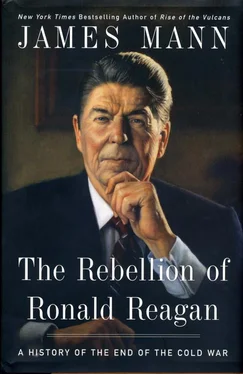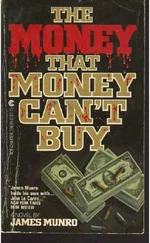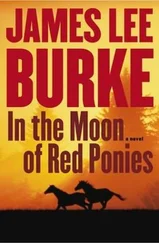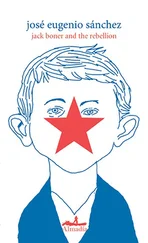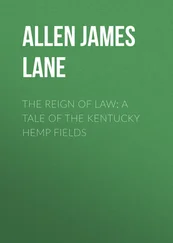Finally, these efforts paid off. In the spring of 1983, she was invited to the Soviet mission to the United Nations in New York for a meeting with Georgi Arbatov, the director of Moscow’s Institute of the USA and Canada and a senior adviser to Andropov. He said he had heard she was still having trouble with a visa.
“Try again,” Arbatov said. She did. Soon afterward she got a Soviet invitation for a visit to Moscow, the approval for which she had been waiting for more than a decade. 7
Massie flew to Moscow in September 1983. By coincidence, her trip, which was planned well in advance, took place during a peak in tensions between the United States and the Soviet Union. A few days before she arrived, the Soviet military had shot down South Korean commercial flight KAL 007 over Sakhalin Island, killing 269 passengers, including 61 Americans. The International Federation of Air Line Pilots Associations responded by calling for a ban on commercial flights to Moscow, and for two weeks most Western airlines complied. Moscow had no flights to or from New York, London, Rome, Frankfurt, or Tokyo. Massie flew to Paris and caught a flight with Air France, the only major Western airline that, through the use of nonunion pilots, defied the boycott. The plane she took to Moscow had only one other passenger. When she arrived at Sheremetyevo Airport, it was virtually deserted. 1
Those weeks brought frequent reminders of the rancor between the Soviet Union and the Reagan administration. Soviet leader Yuri Andropov called the KAL incident a “sophisticated provocation” by American intelligence agencies. In an extraordinary statement to the Soviet people, Andropov accused the Reagan administration of threatening world peace. “Even if someone had any illusions as to the possible evolution for the better in the policy of the present American administration, the latest developments have finally dispelled them,” the Soviet leader said. Soviet foreign minister Andrei Gromyko canceled a visit to the United Nations after the governors of New York and New Jersey refused to let his civilian jet land at civilian airports in their states. The Soviet Union called home twenty Soviet scholars who had been studying at American universities; they had been the last Soviet researchers in the United States under a cultural agreement that had been allowed to lapse in 1979 after the Soviet invasion of Afghanistan. 2
In Moscow, Massie phoned the Institute of the USA and Canada, her official hosts, to thank them for approving her visit after so many years of visa denials. She had expected to spend her time in Moscow looking at churches and museums. Instead, she was quickly invited to the institute for a chat. Once there, she was ushered into the office of Radomir Bogdanov, the deputy director.
The Institute of the USA and Canada was no independent think tank. It worked closely with and for several parts of the Soviet regime, including the Communist Party Central Committee, the Foreign Ministry, the armed forces, and the KGB. The institute, which housed about three hundred employees, had been set up in the 1960s by Georgi Arbatov, Moscow’s leading specialist on the United States, the official who had opened the way for Massie’s visit. Arbatov was particularly close to Soviet leader Yuri Andropov, the former KGB chief. 3
During the early 1980s, Arbatov and his institute were at the height of their influence in Moscow, not only because of Andropov’s ascent but also because of what was happening in Washington. After Reagan took office, the veteran Soviet ambassador Anatoly Dobrynin found that he no longer enjoyed the same access to top levels of the administration that he had held in the Nixon-Kissinger years. From Moscow’s perspective, the Reagan administration wasn’t talking much to the Soviet embassy in Washington, and Dobrynin wasn’t offering much insight. As a result, the job of the USA Institute was to address from Moscow the large questions that were not being answered by the Soviet embassy in Washington: What did the new Reagan administration represent? What were the sources of Reagan’s power? Why was he so popular in the United States? Was he planning to take the United States to war with the Soviet Union?
Radomir Bogdanov, the deputy director, was short, chunky, and balding; he bore a slight resemblance to Nikita Khrushchev. His colleagues at the institute regarded him as crude and vulgar. He had a biting sense of humor and several girlfriends.
He had not come to the institute from academia or the Foreign Ministry, the route taken by some of its specialists. Rather, Bogdanov was a leading intelligence official of the KGB. He had served as the KGB’s resident, or station chief, in New Delhi in the 1960s, during the era when the Soviet Union solidified its ties with India. Within the KGB, he was considered one of the most experienced veterans in “active measures,” that is, the spread of false rumors and other disinformation. 4
Bogdanov was a familiar figure to American journalists, embassy officials, and arms-control specialists. He served regularly as an interlocutor for visitors from the United States, offering the official Soviet point of view in words that went beyond the formulations of the Foreign Ministry. From the institute in Moscow and at disarmament conferences overseas, Bogdanov volunteered opinions and themes that fit with Soviet policy objectives. “Throughout the late stagnation and early glasnost years, Bogdanov was one of the few people visiting foreigners could come to for an interview,” observed David Remnick, a Washington Post correspondent in Moscow in the 1980s. 5
Many of those who dealt with Bogdanov realized that he was from the KGB. So did Massie, by her subsequent account. She was familiar enough with Soviet institutions to know that the deputy director of an organization was frequently a KGB representative. 6If anything, Bogdanov’s intelligence connections enhanced his status. When Andropov became Communist Party general secretary after Brezhnev’s death in November 1982, his ascent demonstrated that the KGB stood at the top of the institutional hierarchy in Moscow.
Throughout the early 1980s, Bogdanov issued a steady stream of warnings to visiting Americans that the policies of the Reagan administration were going to lead in some way or another to disaster. “In this Reagan administration, you have people who are ready to push the button,” Bogdanov told Nicholas Daniloff of U.S. News and World Report in early 1982. “They are dangerous people, and they are sure there is only one way to deal with the Soviet Union—to destroy it in a nuclear war.” To Strobe Talbott of Time, he declared later that year, “These people in the White House are unpredictable ideologues. They think we are so weak that we can be crushed by economic pressure. They don’t understand how this dangerous illusion might play into the hands of some people here.” 7
In the meeting with Massie in September 1983, Bogdanov conveyed his usual message of gloom about Soviet-American relations. This time, he went a step further. “You don’t know how close war is,” he told her. Massie had been observing the Soviet Union from the United States, not Moscow, and her focus had been on Russian culture, not high-level diplomacy. Now she was unexpectedly getting a warning about a potential outbreak of war from a well-connected official at a time when, after the KAL incident, the Soviet Union seemed increasingly isolated from the West.
She returned to the United States in dismay, determined to find some way to ease the hostility. She pursued this quest with her usual tenacity, working the high-level connections she had been relentlessly cultivating for the previous decade. At first, she tried to gain an appointment with Reagan’s national security adviser, William Clark, by going through the famed Russian cellist Mstislav Rostropovich, an acquaintance who knew Clark well. That plan fell through because on October 17, before Massie could land a meeting, Reagan suddenly replaced Clark at the National Security Council, with Robert C. “Bud” McFarlane.
Читать дальше
